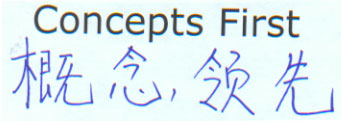Chuxiong Visit
PLanning page for visit to Chuxiong, December 2007
Follow-up. Some of the strategies with some translation. In process!!
Contents
Strategies:
- Context Rich Problems
- Think Pair Share
- Predict, Observe, Explain
- Collaborative Small Groups
- A Problem Solving Strategy
- A Special Kind of Problem
- Physics Concepts first
-From Derek . . .
I'm doing a couple of days of workshops next month at a Chinese University (Chuxiong Normal University) http://www2.cxtc.edu.cn/cnu-english/cnu-index.asp.
Topics include: "Thinking like a Physicist", Problem Based Learning, Small group problem solving strategies, Discrepant events, Think-Pair-Share, Predict-Observe-Explain, "Concepts First", Context rich problems, and Socratic (Confuscian?) dialogue.
This is an interesting connection for me via a chance visitor (David Wang, from CNU) to my building earlier this year.
The venue they have chosen is the Students Union building, with round tables, nice surroundings and space to play.
Things I am working on:
- Finding some PER papers in Chinese: Does anyone know of any Physics Education Research papers in Chinese, preferably a translation of some English papers. (For my benefit) - or websites of interest or . . .) I can find only one reference on this list to Chinese material: Halloun, I., R.R. Hake, E.P Mosca, D. Hestenes. 1995. Force Concept Inventory (Revised, 1995); online (password protected) at http://modeling.asu.edu/R&E/Research.html. (Available in English, Spanish, German, Malaysian, Chinese, Finnish, French, Turkish, Swedish, and Russian.)
- Translations. For example: Trying to figure out an accurate translation for Free Body Diagram. Often called a One Body Diagram.
Got this now, courtesy of a friend of a contact on the PHYSLNR list, Professor Guo Yuying, Beijing Normal University.
It is 隔离体受力分析图 - My list of things to run the sessions. Need:
- Ladder
- Some handkerchief parachutes
- Electrical circuit construction materials
- Oranges or similar objects for throwing and rolling
- Glue, Scissors, Paper, Tape and markers for concept map creations
- Stop watches
- Pendulums
- Laser pointer
- . . .
- Sorting Pictures (dropping parachutes, gear, skyrockets, kids working
- Finding some gear to take.
Keeping in touch
I will have a travel blog. Any comments to: derek.chirnside(at)canterbury.ac.nz
Anything I find to do with Education in Physics in China
- http://www.ied.edu.hk/apfslt/ - China’s physics education reform in the new century: Opportunities and challenges.
Professor HU Bing-yuan: President, Research Association of National Higher Physics Education, China Physics Department, East China Normal University Shanghai 200062, CHINA


